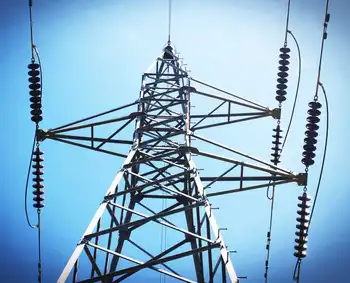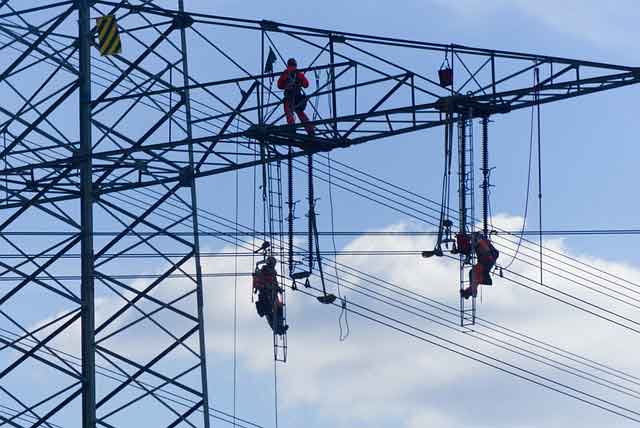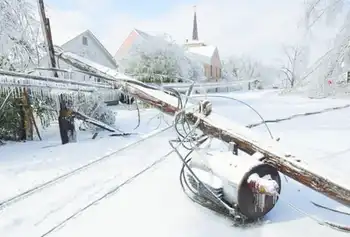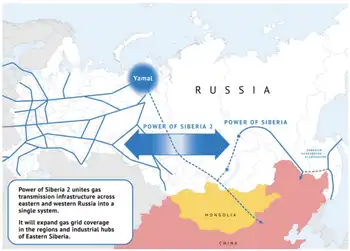Clean-coal dream remains elusive for west
By Globe and Mail
Arc Flash Training CSA Z462 - Electrical Safety Essentials
Our customized live online or in‑person group training can be delivered to your staff at your location.

- Live Online
- 6 hours Instructor-led
- Group Training Available
Known as FutureGen, the project was trumpeted as a promising solution to the devastating effects coal-fired plants around the world are having on the environment. Clean coal technology, the President said at the time, would be a crucial weapon in the battle against climate change.
The project's startup cost was $50-million, the bulk of which was supplied by Washington. Mattoon, Ill., was eventually chosen as the site. Preliminary designs were drawn up. Environmental impact studies were done. And then, in January of this year, the whole project came to a grinding halt - before it even started.
The federal government pulled out.
What happened? It seems the Bush administration became concerned about escalating overall cost estimates, which had nearly doubled to $1.8-billion. Now the entire enterprise is in limbo - just like many of the clean-coal technology projects around the U.S.
The spectacular halt of FutureGen was highlighted in an illuminating front-page report in New York Times that chronicles how mounting costs are slowing efforts to develop clean-coal technology.
You might be wondering how this relates to the western premiers conference that wrapped up recently. Well, clean coal has been much discussed in Prince Albert, especially by its biggest proponents, Saskatchewan Premier Brad Wall and Alberta Premier Ed Stelmach.
In a final communiqué, the premiers of the four western provinces and northern territories said clean-coal technology should be a national priority, and the group promised to raise the matter when all the premiers meet in Quebec City in July.
The group here is convinced clean coal is possible. In Saskatchewan's case, developing the technology to make it happen forms the centrepiece of the province's climate-change action plan.
On that front, Mr. Wall is banking on a clean-coal technology experiment of his own. SaskPower is developing what it is calling one of the first and largest clean-coal and carbon-capture demonstration projects in the world. The federal government announced in the last budget it was committing $240-million toward the $1.4-billion project.
There are lots of questions in Saskatchewan these days about the project's final price tag. Prime Minister Stephen Harper made a point of saying Ottawa won't commit to covering any cost overruns. The balance of the funding is coming from SaskPower and many believe the public utility will hike electricity rates to raise the money.
Concerns about escalating costs would appear to be legitimate. Last year, SaskPower shelved plans for a 300-megawatt clean-coal plant when projected cost assessments finally reached $3.5-billion.
Similar projects in Sweden, Australia, Germany and Denmark, meanwhile, have all had to clear funding hurdles. Consequently, none is far along.
There also seem to be many important questions that still need answering about carbon capture, such as what kinds of rocks and soils are best for storing CO2, and who would be liable if a project polluted the groundwater or caused other damage.
The delays and cancellations of various test projects have raised doubts that clean-coal technology will be available before 15 to 20 years.
All this is not to say that Saskatchewan and others shouldn't continue investing research dollars into pursuing the clean-coal dream. Alberta has committed $500-million for research into the area, and that's great. But there is certainly growing evidence that there will be no short-term breakthroughs on this front, which makes you wonder what those counting on it - like Saskatchewan and Alberta - are going to do in the meantime about greenhouse-gas emissions.
"We've got to get this work done," Mr. Wall said at the end of the premiers' gathering. "The risk of not doing anything is too great and is frankly unacceptable. And we have a much shorter time line in terms of seeing results from our projects - four years."
Now that we'll have to see.











